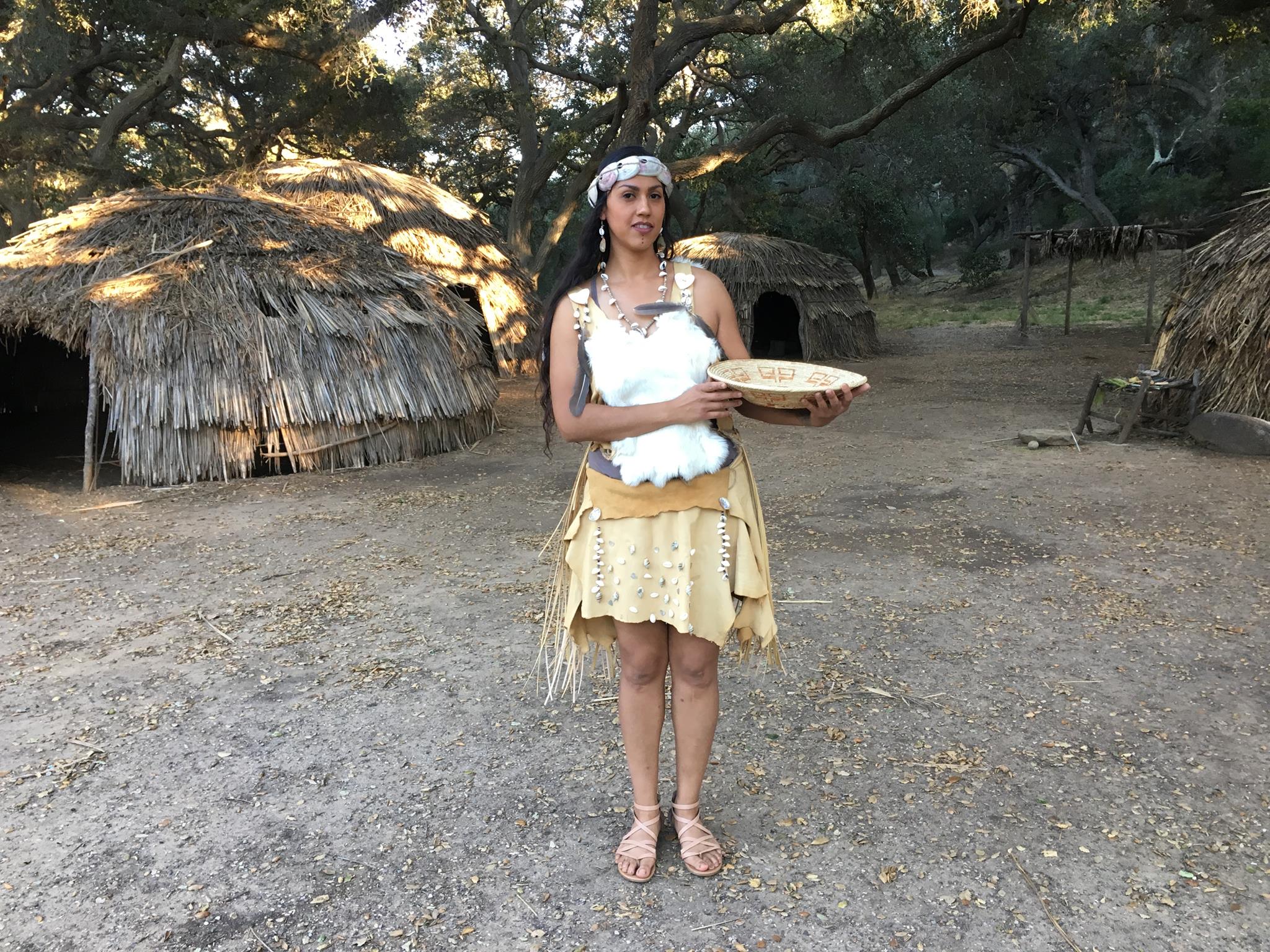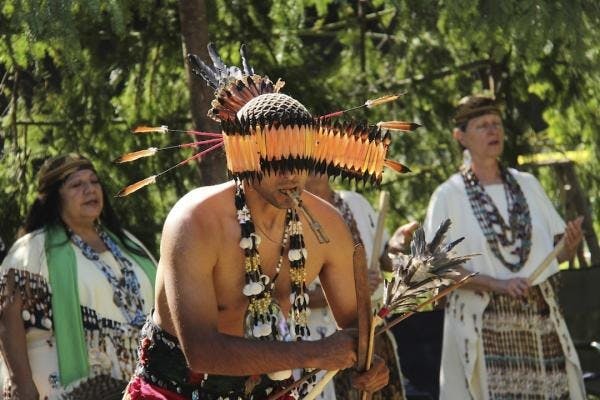Congratulations to the successful PSi Regional Cluster team and community partners – led by Tria Blu Wakpa from UCLA. We’re delighted to support this innovative, inclusive process of gathering and discovery. For more information, please find images attached, and an introduction to the project by Tria Blu Wakpa below.
Revitalizing and Innovating California Indian Dances Gathering and Presentation
In her innovative dissertation, Indigenous Artists, Ingenuity, and Resistance at the California Missions After 1769, Yve Barthelemy Chavez (Gabrielino/Tongva, Tohono O’odham, Akimel O’odham) writes: “This is the first time that California Indian dances have appeared in an art historical study of the California missions. A topic worthy of closer investigation, dance was and remains a vital component of coastal Southern California Indian culture” (2017, 206). Chavez’s words and her dissertation more broadly—which does not have an end date—urge us to consider the enduring impacts of the missions on California Indian peoples as well as the ways that they have negotiated and continue to negotiate these legacies for their own purposes. Although in the contemporary moment, many California Indian peoples continue to practice their dances, given the ongoing effects of the California missions and colonization more broadly on California Indian bodies and movement forms, many tribes are actively working to revitalize and innovate their dances. Yet, California Indian nations have largely lacked structural mechanisms to support this work.
A Performance Studies international Regional Cluster Grant will aid in bringing together key California Indian cultural leaders together to exchange ideas about their contemporary dance practices. Reminiscent of precolonial pan-California Indian gatherings, the daylong event will bring together representatives of four California tribal nations—the Tongva, Chumash, Costanoan Rumsen Carmel Tribe/Ohlone, and Winnemem Wintu—to network about revitalizing their Native dances and songs and contribute to the scholarship on Indigenous dance. In particular, the gathering will feature: Tina and Jessa Calderon (Tongva and Chumash); Deborah Sanchez (Chumash); Chief Caleen Sisk and Pom Tuiimyali (Winnemem Wintu); and Desiree Munoz and Carla Marie (Costanoan Rumsen Carmel Tribe/Ohlone), all of whom are respected in their tribal communities. Although California Indian peoples have diverse cultures, each of the four aforementioned nations is a “water tribe” with a traditional territory beside an ocean or another large body of water. Each tribal nation also has dances that draw on the embodied knowledge of more than human relatives who are also inextricably connected to the water—such as dolphins, salmon, and swordfish.
Because of the uneven ways that the California missions have targeted California Indian peoples, and the different approaches they have taken to revitalizing and innovating their dances, there is tremendous potential for California Indian peoples from nations directly impacted and not directly impacted by the missions to learn from one another. Although the Winnemem Wintu were not involved in the California mission system, the revitalization and innovation of their dances has been at the forefront of the tribal nation’s contemporary strategies to resist the desecration of their tribal lands and the genocide of their other than human relatives—namely, salmon.
The gathering will occur on Tongva lands. With respect for tribal knowledge and protocol, the event will also be closed to the public throughout the days. However, there will be an evening presentation in which tribal representatives will report to the public based on what they deem is appropriate knowledge to share. Outcomes of the gathering will be: gathering proceedings and a peer-reviewed publication on the gathering’s public presentation as well as co-written, peer-reviewed publications on the revitalization and innovation of a particular dance from the Tongva, Chumash, Costanoan Rumsen Carmel Tribe/Ohlone, and Winnemem Wintu nations.





